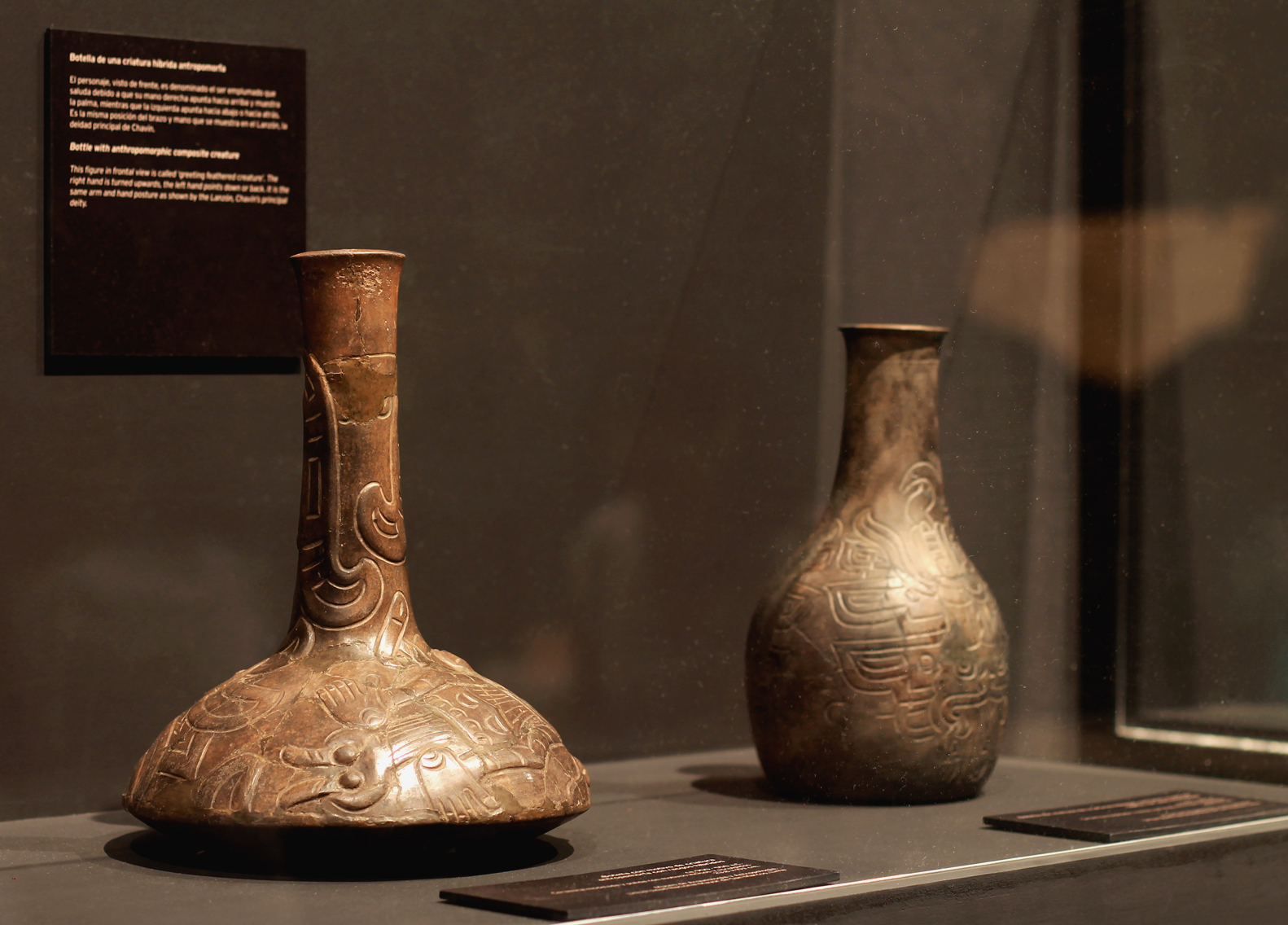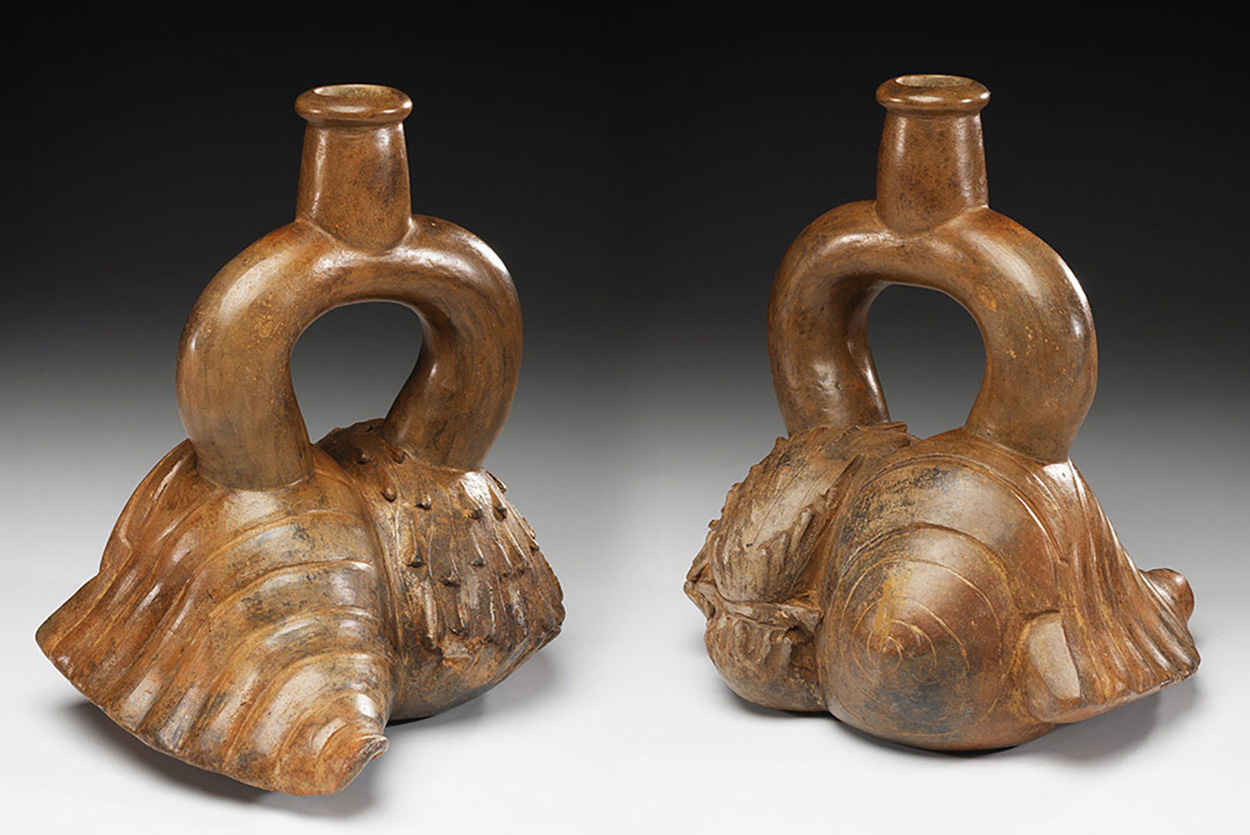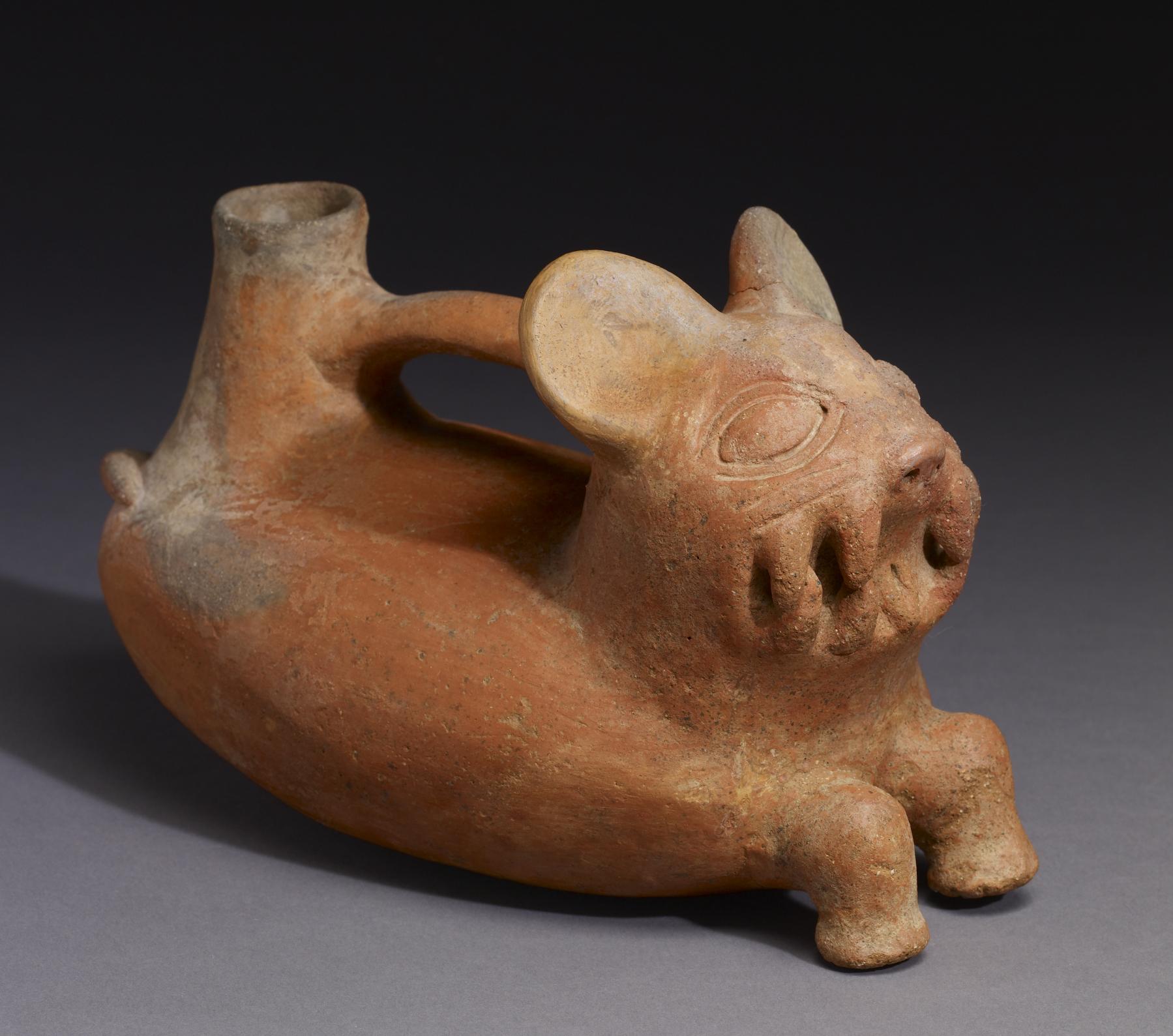The Chavín culture is considered by specialists to be the first highly developed culture in pre-Hispanic Peru, its influence spread rapidly throughout what is now the north of the country. All the art of this ancient culture amazes with its quality, deserving special mention of the Chavin ceramics.

Chavin ceramics
Chavín pottery reflects the artistic evolution that this culture experienced through all these years, serving as an influence for other cultures.
Chavín culture
The Chavín culture flourished in the central and northern Andes, around 900 to 200 BC, being one of the first and main pre-Inca cultures. The religious center of Chavín de Huántar was an important point of pilgrimage throughout the Andean region and was especially influential in both contemporary and later cultures including from the Paracas to the Incas.
This center is significantly located at the meeting point of two rivers that belong to a typical Andean tradition, the Huachesca and Mosna rivers, in the upper basin of the Marañón River, in the current department of Áncash and was in use for more than five centuries. .
This area is XNUMX meters above sea level and encompasses the Quechua, Suni, and Puna life zones. In the periodization of pre-Columbian Peru, the Chavín is the main culture of the Early Horizon period in the highlands of Peru, characterized by the intensification of religious worship, the appearance of ceramics closely related to ceremonial centers, the improvement of agricultural techniques and the development of metallurgy and textiles.
Chavin Art
The art of the Chavín culture represents the first to spread throughout the Andes and with recognizable characteristic features of the original style. In Chavín art two perfectly defined stages can be recognized. The first stage corresponds to the construction of the «Old Temple» in Chavín de Huántar approximately between the year 900 and the year 500 BC; The second stage corresponds to the construction of the "New Temple" in the same place, an event that occurred approximately between 500 and 200 BC.
In Chavín art, wall decorations are presented in the form of carvings, sculptures, ceramics. Artists preferred to depict non-native plants and animals, such as jaguars and eagles. One of the most important motifs in Chavín art is the figure of felines, which was of great religious importance and is repeated in many sculptures.
Typical examples of Chavín art are three known artifacts: the Obelisk of Tello, the "heads of thorns" and the Lanson. The Obelisk of Tello is a giant sculptural rod with images of plants and animals, including alligators, birds, cereals, and people. Probably, the image on the obelisk conveys the story of the creation of the earth. Spike heads, found throughout Chavín de Huántar, are massive carvings of jaguars that peek out from the top of the interior walls.
Probably the most interesting artifact is the Lanson, which is a XNUMX-foot-tall granite pillar that runs through the roof of the temple. It has an image of a fanged deity (half jaguar, half snake, half human), the main cult creature of the Chavín people. When studying Chavín ceramics, two types of vessels were discovered, a multifaceted type with a carved image and another type painted in a rounded color.
Chavin ceramics
Chavín pottery is best known for the decorations found in the galleries of Chavín temples. The tableware is usually monochromatic and can be opaque red, brown or gray. The vessels were solid and heavy mainly in the first period.
The main forms are open bowls with vertical or slightly expanding sides and flat or gently rounded bases, jars and bottles with stirrups. The surface can be embossed or decorated by incising, embossing, brushing, roulette or serrated rocker stamping, all of which can be applied to particular areas in contrast to smooth ones. Some bowls have deeply incised designs on the inner and outer faces.
Over time, Chavín ceramics presented many changes, for example, the first stirrup pipes were relatively small, very thick and heavy, presenting a thick flange. Over time, the stirrups became lighter and the spikes longer; the bridle shrank and eventually disappeared. The necks of the flasks underwent similar changes.
The decoration on some of these ceramics is extremely striking; some have carved floral designs, and another has a rough surface in which there are a series of concave circular depressions with a remarkably high polish. Cupisnique stirrup spout vessels, some of which were modeled on anthropomorphic figures, animals, or fruit, were the beginning of a tradition of naturalistic modeling on the North Coast, which persisted throughout its history. Towards the end of the period, a two-tone pottery came into use.
There is a considerable area on the southern Peruvian coast with its center in the Ica Valley, where strong influences from the Chavín culture have been found in the Paracas style of pottery and two textiles painted in pure Chavín style have survived from the same valley. Paracas pottery was very different from that of Chavín, but various reasons have allowed the two to be closely related.
Paracas began at roughly the same time as Chavín, around a thousand BC, and lasted throughout its span and beyond, perhaps as late as around two hundred BC. The most characteristic form of Paracas pottery was a closed globular vessel with a somewhat flattened base, which had two narrow spouts connected by a flat bridge, or more frequently, with one spout replaced by a human or bird's head.
Simple round bowls were very common. The ware was most commonly black or very dark brownish, and much of the surface was covered with decoration outlined by incision and painted polychromely in hard, glossy, resinous colors after firing. A panel with a feline face at one end of a spout-and-bridge vessel was one of the most common forms of decoration.
Paracas art is also distinguished by its beautiful embroidered textiles, which are usually found in the shroud of the important dead. Embroidery had a popularity at this time that it later lost, but a surprisingly wide range of weaving techniques were also used in various parts of the coast.
Chavín pottery was mainly monochrome, it was modeled, polished and incisions, applications and lines were made as a form of decoration. The form that was generally the most used is the vessel that has a globular body with a stirrup-shaped handle and a cylindrical neck. The Chavín people knew and used gold, silver, copper and it is probable that they also knew some alloys. To melt these metals it is believed that they used furnaces made of clay, with charcoal as fuel.
The technique used with metals was lost wax, carving, embossing and incision. The metallic objects currently found are: tools, body adornments, ritual objects and weapons.
Chavín pottery was polished black, dark brown, gray, or brownish with incisions, appliqués, and carving. The typical forms of ceramics are bottles with long necks, plates and bowls. Ceramic with high relief decoration for ceremonial purposes. The development of Chavín ceramics presents three periods:
Urabarriu period
The Urabarriu period goes from the year nine hundred before Christ to two hundred before Christ. During this period, the Chavín de Huántar temple was located in an area surrounded by small residential areas where a few hundred people lived. The residents of the area were mainly dedicated to hunting and it was during this period that the chavines began the cultivation of corn and potatoes.
The pottery of the Urabarriu stage was highly influenced by other cultures. The archaeological evidence found suggests that during this period the Chavín pottery production centers were widely scattered, possibly due to the low demand of a population that was scattered.
Chakinani period
The Chakinani period was between the year five hundred BC and the year four hundred BC. During this time the residences around the Chavín de Huántar temple grew enormously due to the constant migration of people. It was during this stage that the Chavín culture began the domestication and breeding of the llama, reducing deer hunting. During this phase there was more communication and trade with other distant civilizations.
Rocks or Janabarriu Period
The Rocas or Janabarriu period goes from the year four hundred before Christ to the year two hundred and fifty before Christ. During this period there was a considerable increase in the population. The residential settlements became large urban centers, in the valleys with a high population density and some communities in the higher altitude areas. During this period, social differentiation and specialization in work begin to take shape.
The early horizon was succeeded by what has been called the early intermediate period. The beginning of the Early Intermediate marked the decline of Chavín cultural influence and the achievement of artistic and technological peaks in various centers, both on the coast and in the highlands.
Here are some links of interest:



